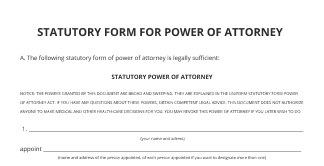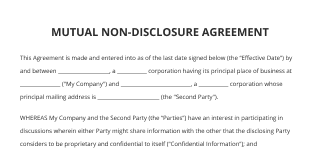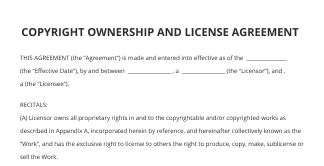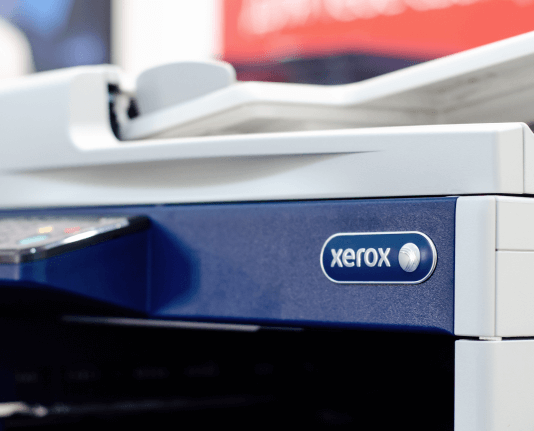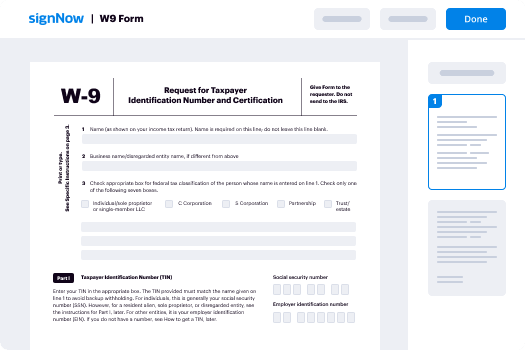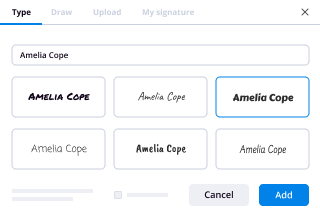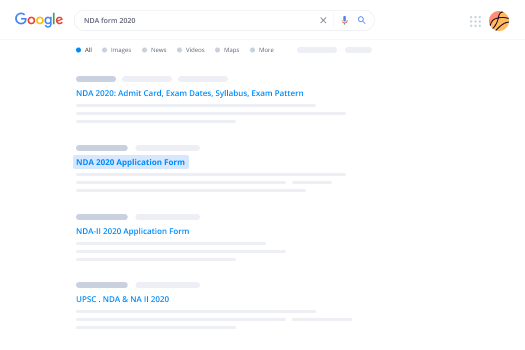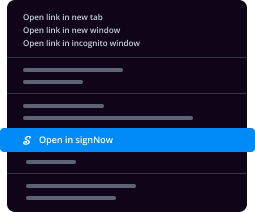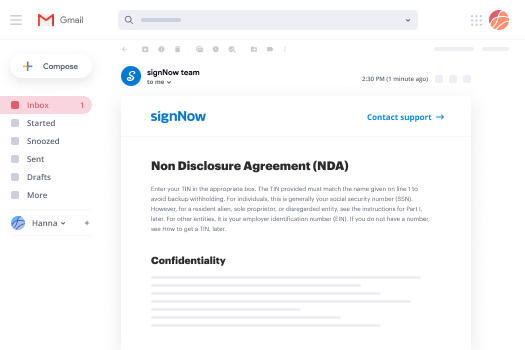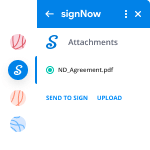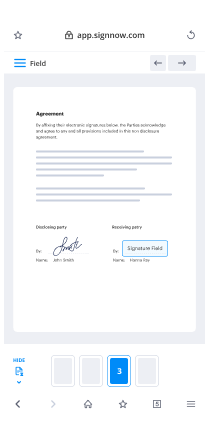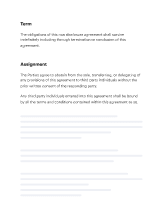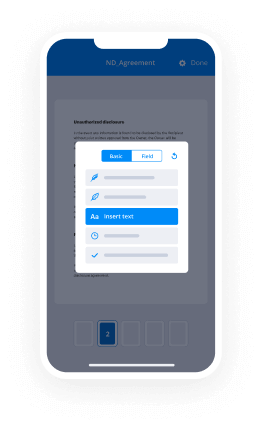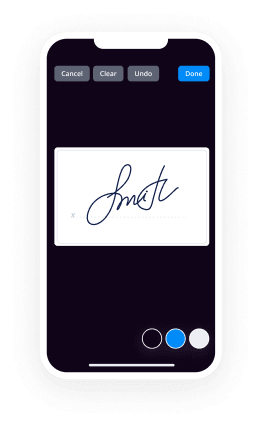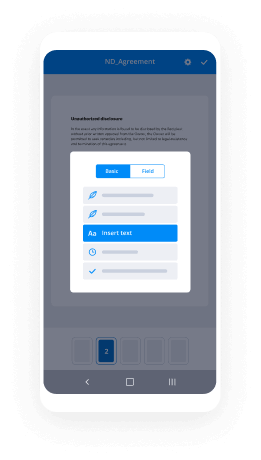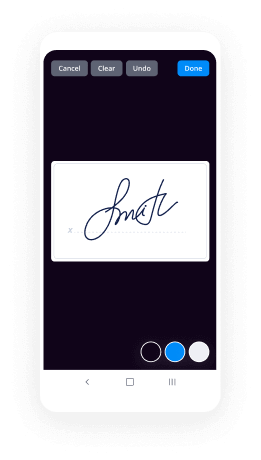Modèle De Fiche De Termes De Redline Avec airSlate SignNow
Faites plus en ligne avec une plateforme de signature électronique mondialement reconnue
Expérience de signature remarquable
Rapports et analyses robustes
Signature électronique mobile en personne et à distance
Politiques et conformité industrielles
Modèle de fiche de termes de redline, plus rapide que jamais
Extensions de signature électronique utiles
Découvrez les signatures électroniques airSlate SignNow en action
Solutions airSlate SignNow pour une meilleure efficacité
Les avis de nos utilisateurs parlent d'eux-mêmes






Pourquoi choisir airSlate SignNow
-
Essai gratuit de 7 jours. Choisissez le forfait dont vous avez besoin et essayez-le sans risque.
-
Tarification honnête pour des forfaits complets. airSlate SignNow propose des abonnements sans frais supplémentaires ni frais cachés lors du renouvellement.
-
Sécurité de niveau entreprise. airSlate SignNow vous aide à respecter les normes de sécurité mondiales.

Votre guide étape par étape — redline version meaning
En adoptant la signature électronique d'airSlate SignNow, toute entreprise peut augmenter ses flux de signature et signer en ligne en temps réel, offrant une expérience améliorée aux consommateurs et au personnel. Modèle de fiche de termes de redline en quelques étapes faciles. Nos applications mobiles rendent possible le travail en déplacement, même hors ligne! Signez depuis n'importe où dans le monde et terminez rapidement vos tâches.
Comment remplir et signer un real estate deal sheet template
- Connectez-vous à votre profil airSlate SignNow.
- Trouvez votre document dans vos dossiers ou téléchargez-en un nouveau.
- Ouvrez le document et modifiez le contenu en utilisant le menu Outils.
- Placez des cases à cocher, ajoutez du texte et signez électroniquement.
- Ajoutez plusieurs signataires via e-mails et configurez la séquence de signature.
- Choisissez quels utilisateurs recevront une version signée.
- Utilisez Options avancées pour restreindre l'accès au document et définir une date d'expiration.
- Cliquez sur Enregistrer et Fermer lorsque vous avez terminé.
De plus, il existe des fonctionnalités plus avancées pour redliner le modèle de fiche de termes de redline. Listez les utilisateurs dans votre espace de travail numérique collaboratif, visualisez les équipes et suivez le travail d'équipe. Des millions de personnes aux États-Unis et en Europe conviennent qu'un système qui rassemble tout dans un espace de travail holistique est ce dont les entreprises ont besoin pour que les flux de travail fonctionnent facilement. L'API REST d'airSlate SignNow vous permet d'intégrer les signatures électroniques dans votre application, site web, CRM ou cloud. Découvrez airSlate SignNow et profitez de flux de travail de signature électronique plus rapides, plus simples et globalement plus efficaces!
Comment ça marche
Fonctionnalités airSlate SignNow appréciées par les utilisateurs
Découvrez des résultats exceptionnels term sheet template
Obtenez des signatures juridiquement contraignantes dès maintenant !
FAQ term sheet samples
-
Comment redliner un document?
Dans la barre d'outils en haut de l'écran, cliquez sur l'onglet "Révision". Cet onglet contient des outils pour aider à la vérification orthographique et à la modification, y compris la fonction "Suivi des modifications". Cliquez sur le bouton "Suivi des modifications" pour l'activer. Cette fonction place une ligne rouge dans les marges à côté de tout texte modifié. -
Que signifie redliner un contrat?
Redliner un contrat consiste à modifier un brouillon. Le brouillon peut avoir été fourni par un avocat adverse, ou il peut s'agir d'un ancien contrat que vous utilisez comme modèle. Redliner nécessite de revenir et de négocier avec l'autre partie pour finaliser les détails de votre accord. -
Qu'est-ce qu'une version redline d'un document?
"Redlining" est une forme de modification dans laquelle de l'encre rouge est utilisée pour indiquer la suppression ou l'ajout de texte dans Microsoft Word. Vous pouvez redliner un document Word en utilisant la fonction intégrée "Suivi des modifications" de Word, ou vous pouvez manuellement redliner le document avec des changements de couleur de police et des barrés. -
Qu'est-ce qu'un redline en termes juridiques?
Définition légale du redlining 1 : la pratique illégale de refuser d'offrir un crédit ou une assurance dans une communauté particulière sur une base discriminatoire (en raison de la race ou de l'origine ethnique de ses résidents) — comparez le reverse redlining. 2 : la pratique de montrer des modifications à un brouillon de document en marquant avec des lignes rouges. -
Comment faire un Blackline dans Word?
Lancez Microsoft Word. ... Allez dans le ruban > Révision > Groupe Comparer > Cliquez sur Comparer. Cliquez sur Comparer deux versions d'un document (blackline juridique). ... Cliquez sur Plus, puis sélectionnez les paramètres pour ce que vous souhaitez comparer dans les documents. ... Cliquez sur OK. -
Comment imprimer un redline dans Word avec des commentaires?
Appuyez sur Ctrl+P. Word affiche la boîte de dialogue d'impression. (Voir la figure 1.) En utilisant la liste déroulante "Imprimer ce qui", choisissez soit "Liste de la mise en évidence" soit "Document montrant la mise en évidence". (Le premier n'imprime que les commentaires et autres marques de document, le second imprime le document avec tous les commentaires et autres marques.) Cliquez sur OK. -
Comment comparer deux contrats?
Ouvrez les documents que vous souhaitez comparer. Dans l'onglet Révision, dans le groupe Comparer, cliquez sur Comparer. Cliquez sur Comparer deux versions d'un document (blackline juridique). Sous Document original, parcourez pour sélectionner le document que vous souhaitez utiliser comme document original. -
Quelle est la différence entre les documents Redline et Blackline?
Un "blackline juridique" est une comparaison entre des documents originaux et des documents révisés. ... Un document blacklined est généralement appelé un "blackline juridique" uniquement dans la profession juridique. Un document "redline" est similaire à un document blackline, mais se réfère généralement à un document en dehors de la profession juridique. -
Comment puis-je comparer deux documents juridiques?
Clip suggéré Démonstration Word Blackline Juridique - YouTubeDébut de la démonstration Word Blackline Juridique - YouTube -
Que signifie redliner un document?
"Redlining" est une forme de modification dans laquelle de l'encre rouge est utilisée pour indiquer la suppression ou l'ajout de texte dans Microsoft Word. Vous pouvez redliner un document Word en utilisant la fonction intégrée "Suivi des modifications" de Word, ou vous pouvez manuellement redliner le document avec des changements de couleur de police et des barrés. -
Comment faire une comparaison redline dans Word?
Pour comparer des documents dans Word, ouvrez les deux documents à comparer. Cliquez sur l'onglet "Révision" dans le ruban. Puis cliquez sur le bouton déroulant "Comparer" dans le groupe "Comparer". Sélectionnez la commande "Comparer..." dans le menu déroulant pour ouvrir la boîte de dialogue "Comparer les documents". -
Qu'est-ce qu'un redline en finance?
Le redlining est une pratique non éthique qui exclut certains services (financiers et autres) dans airSlate SignNow pour les résidents de certaines zones en fonction de la race ou de l'origine ethnique. ... Notamment, la politique de redlining est la plus ressentie par les résidents de quartiers minoritaires. -
Comment fonctionne la comparaison dans Word?
Comme son nom l'indique, vous pouvez utiliser la fonction 'Comparer' dans Microsoft Word pour mettre en évidence les différences entre deux versions du même document. En gros, cela consiste à prendre deux copies d'un document et à marquer les changements comme s'ils avaient été faits avec 'Suivi des modifications'. Les options 'Comparer' et 'Fusionner'.
Ce que disent les utilisateurs actifs — redline version meaning
Recherches associées à term sheet template word
Digi sign term sheet template
[Music] what we're going to talk about today is term sheets and the genesis of this is I have a book coming out June 4th which are welcome to pre-order of course on Amazon and the purpose of the book is really to demystify the venture capital business for entrepreneurs and so what I hope that you come away with after reading this is you as an entrepreneur have a better understanding of how does the venture capital business work and therefore how do you as an entrepreneur interact with venture capitalists but since term sheets is such a foundational element of the relationship between entrepreneur and venture capitalists we want to spend a little bit of time today talking about kind of the economic issues inside of a term sheet and how you should think about those if you're negotiating a deal with a venture capitalist what we're going to focus on today is the economic side of term sheet so there's really two foundational pieces to a term sheet we always talk about you know the economics because look who doesn't like to talk about money of course but the other big part which we're gonna defer for another day is what we call governance which is really who gets to say in what decisions around the corporate action so do you get to vote on certain actions does your venture capitalist get to vote if those are what would call governance issues and we're gonna put those aside for today and focus on the money issues the economic issues so to do that we're gonna kind of review some term sheet terms and try to help you understand what they mean why you should care about them and ultimately how you might make a decision between two potential competing terms for your deal so we've got on the board here to kind of offers that you as the entrepreneur have been able to kind of get with two hypothetical venture firms one in this column we're calling haiku and the other indigo we've protected their names to kind of protect the innocent here so let's talk about kind of the different elements here they're relevant from an economic perspective number one is how much money are the firms proposing to invest so as you can see here the Haiku firm is talking about two million dollars the indigo firm is four million dollars now we're gonna come back to that in a second and talk about why you might or might not be interested in taking more money from one of these investors probably the most foundational piece though of the she is what we call the valuation and you'll often hear venture capitalists use the term pre-money or post money these are actually fancy terms that are incredibly simple in their operation pre-money means exactly as the word sound which is what is the company worth pre-us putting in the money before we put in the money and so in this case haiku is telling us that your firm is worth eight million dollars and instantly enough indigo believes the same so both firms here believe today before the money goes in that your firm is worth the same amount of money now post money again is equally simple which is it's just what is the company worth once we've actually put the money in so as you can hopefully see here mathematically the dollars that we invest plus the pre-money equals the post money so very very simple math here I didn't warn you there was gonna be a math test here but hopefully most of you remember arithmetic from elementary school so post money as I said really tells you okay once that money's going on what it's worth and as you can see here we have ten million dollars in this case and twelve million dollars in the other case that's simply a function of the fact that there are different amounts of money going in on the two companies so again we're going to talk about what that means in terms of how you evaluate that and then the final couple things I want to talk about before we explain how to interpret this is number one the option pool so as you probably know when you want to hire employees many employees will want to have some equity ownership in the company to be able to participate in the potential upside of the opportunity and so to do that you will create what's called an option pool and that means basically you're setting aside some percentage ownership of the company that you will give out overtime to employees of the company the venture capitalist in this case are saying when we do this deal we would like you to set aside in the Haiku case 20% of the company's ownership in the option pool and in the indigo case 15% and again we're going to come back to that in a second and understand why those numbers are different and what they're intended to me the next term I want to make sure you understand is what's called a liquidation preference and the simple way to think about liquidation preference is it's the order in which money comes out of the company when we have a liquidation event and normally a liquidation event means we sell the company that's typically what we're talking about here so there's a couple different flavors of this that I want to make sure you understand that are reflected in these two term sheets that we're talking about first is this element here which says one X that could be any number here that could be two X it could be three X it's anything that you might need associate with your venture capitalist it's typically 1x and what the one means is that the venture capitalist gets one times the money that they put into the company okay so if this were 2x instead of one X then that would mean the amount of liquidation preference is 2 times 2 million or 4 million dollars it's very common to see 1x sometimes in later stage financing rounds you might see higher numbers but most the time we're going to see 1x the second flavor then which varies between these two term sheets is whether it's participating or non participating liquidation preference and let me explain the non participating one first because I think that's the simpler one it's also the more common one that you will see particularly in early stages of companies what non-participating means is that the venture capitalist gets a choice when the company is sold they can either take the amount of their liquidation preference so in this case they have a four million dollar liquidation preference because it's 1x right x 4 or they get to take the amount of money they would otherwise get if we consider them just a normal equity owner in the company okay and so the simple scenarios in which this comes into play and I'm going to show you a diagram actually later in the session to help understand this is let's take a very simple example and let's say we sell the company for 10 million dollars okay let's say we've taken this indigo term sheet and we ultimately sell the company for 10 million dollars now under this liquidation preference the venture capitalists or do I take the percentage ownership of the company I have and multiply it by ten million dollars to understand what my what my dollars should that I could come out and as you may see here it roughly this person has four million dollar investment on a 12 million dollar valuation so that means as you'll see in our next chart that roughly they own about 33 percent of the company okay so if we sold the company for 10 million dollars then that would mean they would be entitled to about 3.3 million dollars okay but remember I told you they have a liquidation preference which means they get sick they get a choice which is do I take my 3.3 million dollars or do I take my 4 million dollars obviously any rational venture capitalist here is gonna decide to take their 4 million dollars and so they're gonna get a much higher value than they would have got you just based on their ownership of the company so this is where liquidation preference often comes in when you're selling the company typically for a valuation that's lower than what the valuation is of the venture capitalist may have funded the company at now participating is slightly different and it's actually much more advantageous to the venture capitalist and quite frankly deleterious for the entrepreneur we generally do not see it very often particularly in Silicon Valley but it's good for you to understand how it works remember in non-participating we said the venture capitalist gets a choice they can take either the greater of their liquidation preference or the amount that they would otherwise be owed if they were an equity owner in a company what participating means is they actually don't have to make a choice but they get to double dip in other words they get to take their liquidation preference first plus then they get to take whatever percentage ownership of the company would entitle them in terms of proceeds so just to kind of keep this example here if this one were participating so if we assume that this one were participating instead of non participating in this case if we sold the company for ten million dollars the venture capitalists would first get their four million dollars okay and remember we said we sold it for ten so there's now six million dollars left in the company then the venture capitalist also gets to get 33% of that remaining six million dollars which is roughly about 1.8 million dollars and that's an approximation so now the venture capitalist is getting to double-dip they're getting to take both the four million dollars in liquidation preference plus the additional 1.8 million so as you can see that's very harmful to you as a founder and your other shareholders which is you now have somebody who's taken a much bigger portion of the proceeds of that sale then you might have otherwise anticipated so this is one of these areas that you really want to pay close attention to and as I said I'm going to show you a kind of a graphical way to look at this in the next part of this presentation the final piece and then we're going to look at kind of the ownership of the company is what we call anti-dilution and what anti-dilution means is this maybe not be a polite way to say it but it's kind of schmuck insurance quite frankly for a venture capitalist and what that means is that if I value the company today at eight million dollars right which is what haikus doing and a year from now the company's not doing well and some other venture capital firm says hey you know what you thought it was worth eight but I actually think it's worth six now what the anti-dilution protection does for venture capitalist is to cause them to get a price adjustment such that they get some benefit of that lower price against the shares that they purchased in this round so it's kind of an after-the-fact thing that says hey it turns out we were wrong about the price as a venture capitalist it's lower than we thought it should be and we want some adjustment to make us as a venture capitalist feel whole for that now again there's two flavors here and we're not going to show you the math on it and there's lots of things you can Google to understand the math but the most common form of it is what's called broad-based weighted average anti-dilution and the simple way to think about that as I said you can google that the actual math of it is it's a partial adjustment so it doesn't mean that we say hey all that two million dollars that you invested at eight we now take away the eight and let's assume we're investing in at six but it kind of weights it and it says you know what we're gonna give you some credit for the fact that you put money in at eight we're gonna get some credit for the fact that you're putting money in six you kind of get a blended average that reduces the price that the venture capitalists paid it's still beneficial to them but obviously not as beneficial now the the most beneficial is the opposite of that which is what we call a full of rachet and that really is a price of reset is the very simple way to think about it so in the full ratchet if we assume that that worship here in this case this is actually what would happen is we would just ignore this eight million dollar price and we would say you know what forget that that ever happened assume it never happened now all these numbers adjust instead of eight million six ten million sorry it becomes eight and so now the this person gets the benefit of putting their two million dollars in at a price that gets completely reset based upon the new valuation this new investor put in so again you can imagine and this becomes you know very very you know kind of problematic that the lower lower this goes the more kind of ownership goes to the venture capitalists and you as the entrepreneur or your employees who don't have this protection you get diluted kind of you know even further than you might have anticipated so this is a term that I think most people don't spend a lot of attention on but can actually have very material economic consequences particularly in cases where the company may not be performing as well as as could be expected okay so now that we looked at the table of options the next logical thing that you as an entrepreneur we'll want to do is to say okay what does this actually mean dollars and cents for me as a founder and the simplest way to do that is to create a very simple table that you'll hear people call a capitalization table or a cap table for short and all that really is is a fancy way of saying it's a representation of what does the ownership of the company look like once we actually take one of these term sheets okay so let's first look at the Haiku term sheet so if you remember in the haiku term sheet they were offering us two million dollars right on a ten million dollar post-money valuation okay and what I've shown here in this top chart is you as the founders end up at the end of the day owning 60% of the company haiku owns 20% of the company now the simple way to know that that's correct is remember they said they were investing two million dollars on a 10 million dollar post-money valuation right so therefore kind of if your balance sheet doesn't balance or your table doesn't balance you know this needs to be 20 percent so that's just a good double check that you can make sure to make sure you've got it right and then secondly they told us in the term sheet that they wanted the option pool to equal 20% remember this is the pool that we're setting aside to be able to give to other employees so this gives you a sense of kind of what the ownership looks like now let's look at the indigo one just for comparison okay so in this case the first thing you'll notice is the founders own 51.7% of the company now why is that why do we think there's a big difference between what you own in the 51 in this case versus what you own up here well there's two reasons number one is if we look at the Indigo investment they own a third of the company and again just to double check your math remember they invested four million dollars on a twelve million dollar post money so obviously that needs to equal a third which it does so part of the reason they own more the company is because they put more money in so it's pretty simple math here right these guys only put in two million the Indigo folks are proposing to put in four million as a result of that of course understandably so they want to own more of the company and so therefore a big portion of the difference between your ownership here versus there is a function of the fact that the Indigo venture capital firm owns a third of the company now we've got a benefit here which is remember up here we had to put aside 20% for the office Poole the Indigo team gave us a little bit of a break here and said hey we only need that number to be 15% so even though we got reduced in our ownership as a result of this higher ownership by indigo we got a little bit of a benefit here as a result of the option pool okay so let's talk about just a couple things about you know what do you do here what do you choose how do you know which one is better well the short answer is it's actually a trick question because you can't know until you look through all the other relevant terms of the term sheet but let's start with kind of what we know today to get a better sense the real question here is is it worth it for me as an entrepreneur to own less of the company today in order to get the additional four million dollars and so the question that you need to think about as an entrepreneur is what would I do if I had four million dollars instead of two million dollars so one way to think about that is does it de-risk the business for you so in other words if I say look I'm going to invest four million dollars in the company and maybe that gives you 18 or 24 months to try to build the business instead of the two million only lasts twelve or eighteen months you might say that's a trade-off I'm willing to make because that means that it D risks the chances that I can achieve the objectives I want to achieve when I need to go raise the next round of fancy the flipside to think about it is if you took four million dollars instead of two what more could you do over that same period of time so how many more accomplishments how many more objectives could you achieve as a business and therefore you might be on a better of trajectory when you go raise the next round of financing to be able to show that next round of investor all the things you've accomplished there's no right answer to this as you can imagine but this is kind of the calculus that I think you as an entrepreneur me to think about is what could I do with that extra money and would that benefit me in terms of the next round of financing and the opportunity said I would have or do I feel like I need more wiggle room than a two million dollar it gives me and therefore I'm also willing to accept that dilution okay that's one important thing to think about here the second thing is to look at these differences in these option pools now it may be the case that it's hard to know if 20% or 15% is the right number in some respects these are kind of made-up numbers by the venture capitalists but the kind of heuristic that venture capitalists often use to determine what size they want is they're trying to say look when I invest in this company I want this option pool to be able to last you for all the hiring that you're going to do for at least until the next round of financing comes in so that's why you often do see differences between the option pool here and in this case maybe the Haiku people will believe that you're gonna have to hire a lot more people and/or you're gonna have to give them a lot more equity and so therefore they want to make sure you've got a big enough pool to do so okay so that's the other kind of veto lever that you can think about here that has an impact on your overall ownership okay so there's one last piece of this puzzle but I want to kind of share with you which is this is great this is kind of a static picture of what the capitalization table looks like today but the real question is what does it look like potentially when you sell the company or when you achieve what the venture capital is call a liquidity event which is when you as an entrepreneur and your employees and all the venture capitalists hopefully see the fruits of your labor so I'm gonna turn this around to show you kind of what we call a payoff matrix and again this is a very simple way to think about ok in different scenarios what do I as a founder and and we're gonna represent that by what we call the common shareholders because that's the type of stock the founders hold what do I get in a certain scenario and what do the venture capitalists get this is also a good way for us to illustrate what the economic term we talked about before which was the concept of liquidation preference so remember we talked about that which is kind of an order of proceeds who gets what when this graph kind of allows us to visually describe that in a way that helps you understand the trade-offs so let me just take you through kind of this top one first okay so the first piece of this to understand is this graph here of course is the investor so what this shows me if I just look at this first segment of the line here says for any price at or below two million dollars the venture capitalist gets all that money ok so does that make sense because that was the concept of a liquidation preference right they're investing 2 million dollars which means the first two million dollars the company always comes out to them and goes to the venture capitalists so this is what the venture capitalists get so that means you as a founder and you as an employee along this whole portion of the curve here you get nothing because all two million dollars that proceeds are going to the venture capitalist okay and then remember in the Haiku case we had what's called participating preferred and I kind of used the concept that it's kind of like double dipping which means in addition to getting there two million haiku also then gets to participate as an equity in in the company and you can recall from the other side of this graph that we showed they own 20% of the company so that means for any amount of money above 20% in addition to their two million dollars they also get to take 20% of the proceeds of the company okay and so this is kind of a graphical way to think about kind of how this works and so you can see kind of you know this is roughly kind of the break-even point for you as a common shareholder where you start to kind of participate in a much more meaningful way for the economics of the business now in contrast if you look at this at the indigo side we talked about in the indigo side they have a 1x non-participating liquidation preference so remember there one X was 4 million because they put 4 million dollars into the company so you have this same general graph here which is for the first 4 million dollars of the company a hundred percent of that goes to indigo ok and so again you can see for you as an entrepreneur and for your shareholders you will get nothing until the company sells for a value that's greater than 4 million dollars now the other interesting piece here to look at is this flat line between 4 million dollars and 12 million dollars and the reason for this is remember in this case because it's non-participating the investor doesn't get to double dip okay so let me just give you a very simple example here at a 10 million dollar sale price then remember in this case the investor owned 33 percent of the company we use this example earlier in the video which would mean if they just took their percentage ownership they would be entitled to 3.3 million dollars okay but remember also we said which is true is they have the choice of taking the greater of their liquidation preference or 3.3 million dollars so of course any rational investor will take their 4 million dollars okay but if we contrast that with if we said we were selling the company for 15 million dollars and again they get 33 percent of that that's roughly 5 million dollars right is what the answer is now their ownership of the company at five million dollars is obviously greater than 4 million dollars so they will they will choose this and because as we said it's non-participating they don't get to do both they have to pick one or the other so what happens here is between prices of 4 and as you could probably see from a mathematical perspective they're always better off just staying with their liquidation preference because their percentage ownership and the company doesn't yield them any more dollars so the investor has this weird kind of flat line which is they're kind of been different right so it doesn't matter to the investor if I sell it for four million dollars or if I sell it for eleven point nine million dollars I as an investor and Moe is just gonna take my four million dollars and so this is kind of an interesting artifact of this kind of non-participating liquidation preference and then it's only above these price of twelve million dollars where in all cases they will just take one-third of what they're entitled to as an equity owner of the company so I know I've thrown a lot at you in a very short period of time and the terminology sometimes can be confusing here but what I hope you got out of this is a couple things number one is we focused on economics today only and there's a whole other section that we have to care about which we call governance right who gets to say and what things in a company if you read the book you'll get a full rendition of that and so I hope you'll take the opportunity to learn about that as well from the economics perspective though I hope the key takeaways here to think about are how do you understand trade-offs between taking more money or less money potentially in the future how do you think about what that means for you from an economic ownership perspective of the company and then importantly how do you have a general visualization based upon things like liquidation preferences for how to think about who's going to get what kind of money depending upon the type of outcome that the company has
Show moreQuestions fréquemment posées
Comment puis-je faire en sorte que quelqu'un d'autre puisse signer électroniquement des documents ?
Comment faire signer quelqu'un sur un fichier PDF ?
Comment puis-je utiliser mon téléphone pour signer un PDF ?
Obtenez plus pour redline meaning document
- Accord de signature électronique
- Proposition de signature électronique
- Contrat d'achat de signature électronique pour le compte Clients
- Contrat de fusion de signature électronique
- Contrat de gestion de signature électronique
- Email signature Letter of Undertaking
- Email signature Resignation Letter
- Modèle de proposition de signature électronique pour la décoration intérieure
- Email signature Website Standard Terms and Conditions Template
- Modèle de signature électronique Contrat de location de voiture
- Email signature Non Solicitation Agreement Template
- Modèle de contrat d'agence de voyage avec signature électronique
- Modèle de signature électronique pour le protocole d'accord
- Email signature Pharmacy Services Agreement Template
- Email signature Residential Landlord-Tenant Agreement Template
- Email signature Independent Contractor Agreement Template
- Modèle de contrat d'exclusivité pour signature électronique
- Email signature SEO Agreement Template
- Email signature NDA Template
- Modèle de contrat de signature électronique pour freelance recruteur
- Modèle de signature électronique de facture proforma
- Modèle de proposition de signature électronique pour lavage de voiture
- Email signature HVAC Contract Template
- Email signature Solar Panel Installation Proposal Template
- Modèle de proposition de cabinet d'architecture avec signature électronique
- Email signature Employment Contract Template
- Email signature Temporary Employment Contract Template
- Email signature Termination Letter Template





